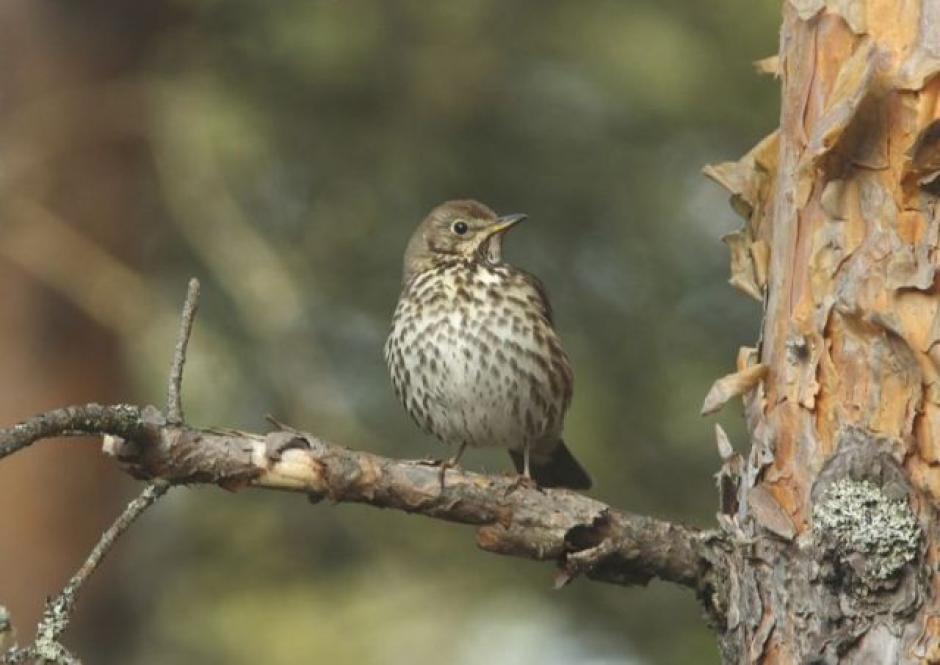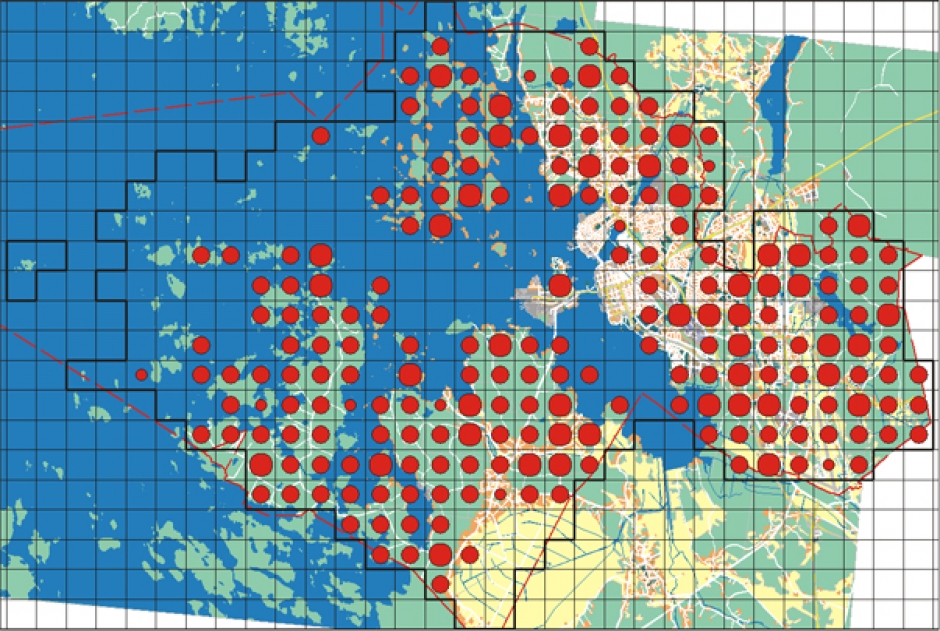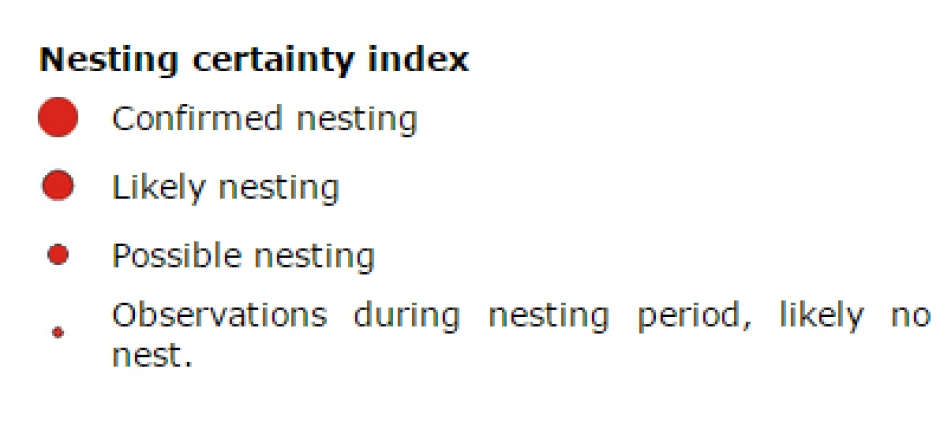Song Thrush
Turdus philomelos

General information. The song thrush is a characteristic nesting bird in coniferous forests. After the 1950’s, numbers have increased in Finland but surveys conducted 1983-2004 indicate a slight, less than 10%, decline in nesting population.
- Length 23 cm
- Nests in a young spruce tree or juniper
- Migratory species. Winters in Central – or southern Europe
- Feeds on worms, insects, berries, conches and fruit
Habitat. The song thrush nests in coniferous forests. It prefers slopes with tall, old pine trees and young spruce trees. On average, about 3,3 song thrushes nest per square kilometer but in Vaasa’s lush, healthy spruce forests the average is about 6-7 pairs/ km².
Distribution in Vaasa. During the nesting season the song thrush was recorded in about 180 survey blocks. It thrives in vast coniferous forest areas but also nests in smaller forests close to human settlements. This species is absent from Söderfjärden’s farmlands, the outer archipelago and the city centre. It is most easily spotted on an April or May evening in the dry peaty forests by Pilvilampi, in Gerby or Öjen, when its song can be heard over a long distance.


